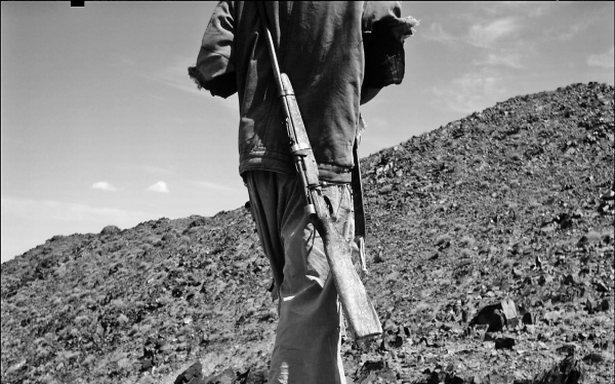Imagine yourself as a wildlife researcher. You set up camera traps in a forest to take pictures of your study animal. But what do you do when the cameras unintentionally capture images of people – local villagers or even suspected poachers? A new paper published by an international team of researchers notes that the privacy of people photographed needs to be respected and lays out seven basic principles, “a blend of ethical and pragmatic good practices,” to be followed.
(Subscribe to Science For All, our weekly newsletter, where we aim to take the jargon out of science and put the fun in. Click here.)
Studies of snow leopards
The study team has been conducting camera trap-based studies of snow leopards in several countries such as Mongolia, India, China and the Kyrgyz Republic. “These cameras are like quiet observers. Some of them had recorded people with guns, trespassers, and even a possible hunting party. This created ethical dilemmas, and that is when we started to explore… yes, on one hand, camera traps can be used as an important tool to detect illegal movement. But have we informed the people enough?” asks Koustubh Sharma, from the International Snow Leopard Trust, and lead author of the paper published in Ecological Evidence and Solutions.
The seven basic principles:
- Permission: Obtain all necessary permissions from government/local departments
- Purpose Limitation: Why are you setting up the camera traps? What is its purpose? Clearly identify these in all relevant documents
- Disclosure: Inform local communities that camera traps are used in the area and their purpose
- Legality: Make yourself aware of the laws of the land
- Privacy: Protect the privacy of individuals inadvertently photographed
- Participation: Involve stakeholders, local communities in the process of camera trapping and co-creating research questions
- Sharing: Explain the technology of camera traps to local communities, and voluntarily share images and credit to agencies that have jurisdiction over the land
He adds that it is important to put out a notice in the surrounding local communities just like how inside an ATM it says: This area is under CCTV Surveillance. “This does two things. One, it warns you that if you do something wrong you’re likely to get caught. The second thing, it also serves as a deterrent because if you know someone’s watching, you are less likely to do something wrong,” says Dr. Sharma.
The ethics question
He explains that it is not ethically correct to quietly sneak out using these cameras and catch the people by surprise; because ultimately it is the local people who are the partners in the forefront of the battle to conserve the habitats and the wildlife.
“Researchers also have public responsibility. It is important we report illegal activity. At the same time, the local communities need to be empowered and well informed of these practices. It is unwise and unethical to use a stealth mode,” says Charu Mishra, Executive Director of the Snow Leopard Trust and co-author.
He adds in a release: “Our article, which builds on years of hands-on experience and knowledge of practising field researchers, social scientists, and legal minds, is a step towards an ethical code of conduct for researchers and wildlife managers working with research cameras. What we do for snow leopards and biodiversity matters, but how we do it matters even more.”
The team writes that there may be situations when these concepts may need to be modified and adapted. They hope that this set of basic concepts can act as an initial checklist that can be constantly updated to improve the practice of ethical camera trap-based research and also help researchers better navigate the ethical-legal tightrope.
This article is auto-generated by Algorithm Source: www.thehindu.com


